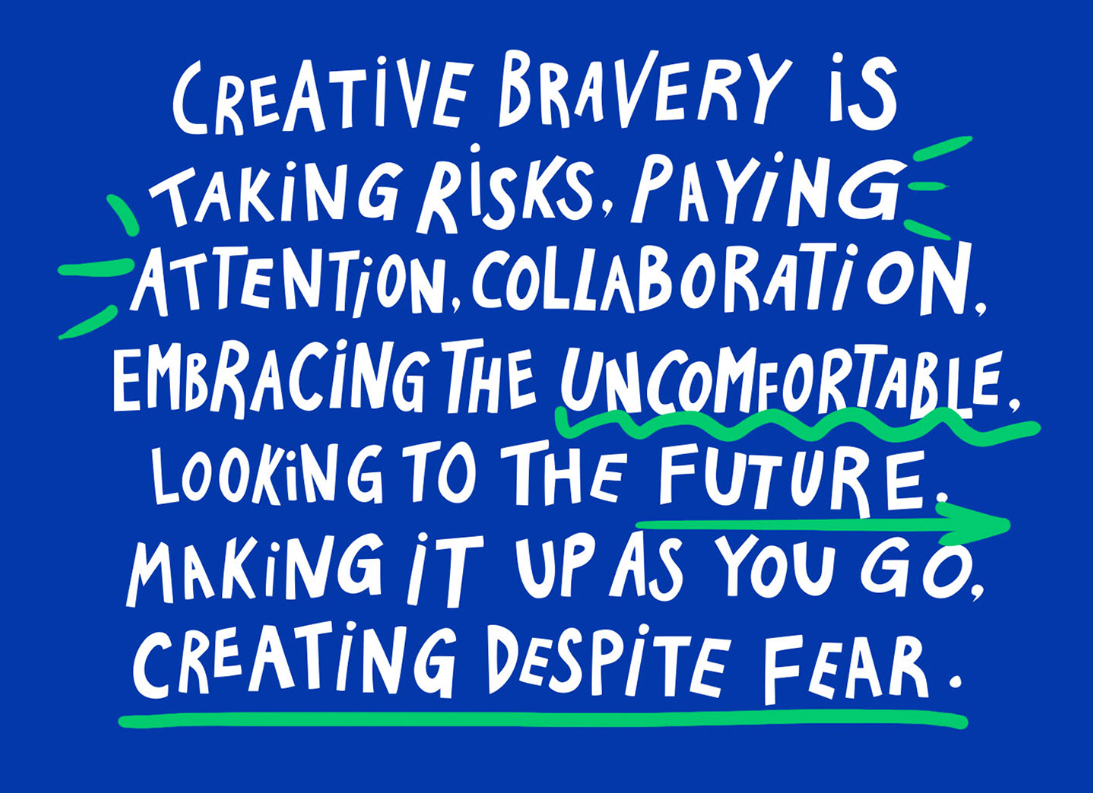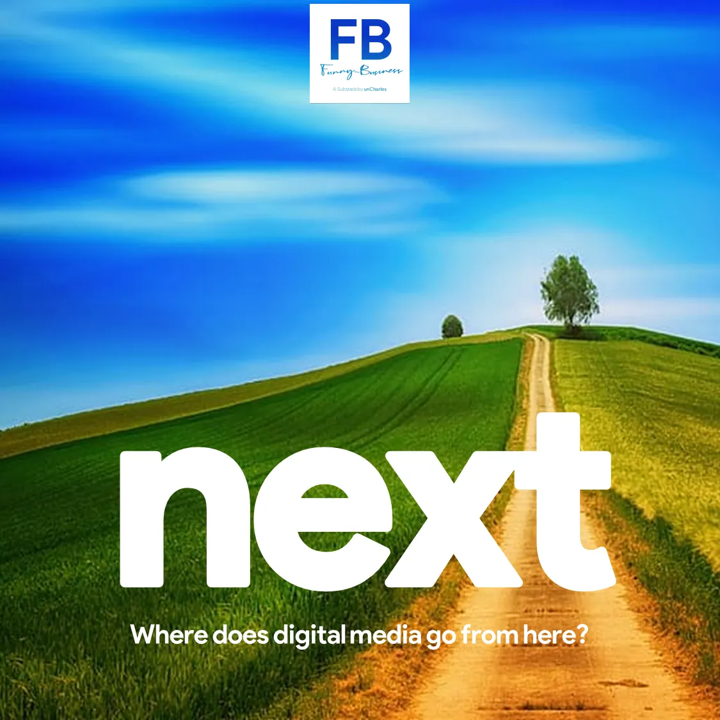Marketing has radically changed in the last 20 years.
It transitioned from being “creative dominant” industry powered by strategy and mass media in limited channels to a “tech dominant” business designed to optimize relationship-oriented, personalized interactions.
The changes touched every aspect of the marketing and every person who works in marketing – all at once. Mass media was eclipsed by digital media which now represents over 70% of all media spend in the U.S. (https://www.insiderintelligence.com/content/digital-us-media-ad-spend). Creative was framed through a tech lens of AI and automation. Data promised targeting precision and personalization that demoted strategy’s value in the eyes of clients.
The appeal of marketing tech is understandable. Technology, it was felt, was more predictable than the more variable human-creative product. Right or wrong – traditional strategy and creative processes were seen as risky compared to the “predictable” outcomes tech promised.
While the “how” of marketing was radically changing, it also demanded that everyone within an industry – top to bottom – reimagine how they did their jobs:
- Leaders had to be tech savvy and proficient enough to help the organization evolve but practically speaking had trouble keeping up.
- Mid-level managers have it very tough. They have to create the actual programs to drive outcomes, but “procuring” the right tech platforms is excruciating. Too many options with too little differentiation. That is unfortunate for the health of the industry.
- Junior managers have the best and the worst. On the positive side, they are very digitally proficient which can be a real asset to the organization. However, too often, these junior people don’t have enough exposure to those who have honed the marketing craft over years. The generation coming up now is tech smart but skills starved.
Tech wasn’t the only game changing transformation of the last 20 years.
As tech transformed everything in marketing, it changed how people felt about marketing. It won’t come as a surprise that many (most??) people who work in marketing nowadays are unsatisfied with their jobs – like really really unhappy. Marketing Brew explains it this way: “Big picture: Modern marketers are juggling decaying identifiers, new and often less effective advertising tools, and a more complex regulatory environment with regards to consumer privacy. Oh, and their budgets are often one of the first things cut in a recession.” (Source: https://www.marketingbrew.com/stories/2023/01/24/why-is-cmo-tenure-so-low)
Contrast this to when I started in marketing at an agency years ago. I had the privilege of working at a major agency called NWAyer. I loved that job because the agency had a well-earned reputation of developing brands through “human contact. The impact of this philosophy is felt to this very day with some of the most iconic campaigns ever created:
- “Be all you can be” campaign for the Army that has recently been relaunched due to its enduring effectiveness
- “Reach and touch someone” for AT&T has evolved into a meme that is used many times every day by people who never saw this AT&T campaign from the 1980s
- “The best part of waking up” Folger’s campaign was a brand positioning that is steadfast in its lasting effectiveness
These campaigns are memorable far after the media budgets evaporated because they captured a deeply felt universal human truth that we could all relate to. The campaigns that stick are those created by people who are joyful – not people who are morose or overwhelmed.
The joy I felt at work was due to a communal, shared goal to serve clients with excellence framed within the “human contact” paradigm.
Today, gone is the joy that fueled brilliant marketing. Ask 200 marketers if they feel joy in their work, you are likely to get a resounding NO or a dull stare conveying the seemingly absurdity of the question. The more technology dominated the industry, the fewer the people who felt joy or satisfaction in their jobs. Marketing has been reduced to managing platforms – not people; tweaking algo’s – not attitudes and gaming digital impressions not reaching real people who authentically engage.
The deeper we dive into the marketing tech ocean, the more unhappy we become.
The Stats That Quantify the “Unhappiness Quotient”
I was sorry to see that there was data on this but I suspect, that while this data is the just the tip of the iceberg, it is sobering nonetheless.
- Employee Satisfaction: An Overview:
With the constant evolution of digital technology, Basis Technologies and Advertiser Perceptions research concluded that less than 25% of advertising professionals express complete satisfaction with their jobs (Career Karma , n.d.; U.S. News Money, n.d.; GlobeNewswire, 2021).
- Job Complexity
A reported 90% of professionals agreed that the industry has significantly increased in complexity and stress. 72% of respondents cited the various transaction methods for media buying as the root cause of this complexity and downstream unhappiness (GlobeNewswire, 2021).
- Turnover Rate:
An alarming aspect of this disaffection among advertising and marketing professionals is the turnover rate. 87% of marketing folks are not happy in their jobs (V Global) and other reports suggest that 38% of professionals plan on leaving their positions within two years (Career Karma, n.d.; U.S. News Money, n.d.; GlobeNewswire, 2021).
- The Role of Training and Technology
The challenge to be current on tech trends, platform updates and changing regulatory requirements is a huge source of job dissatisfaction. Close to a third (30.1%) of marketers say training is a very important to them. Unfortunately, training has never risen as a key priority of investment for companies or ad agencies. (https://www.marketingweek.com/job-satisfaction-marketing-cost-5-interesting-stats-salary-survey-2023/).
Why a loss of joy in marketing matters.
Significant employee dissatisfaction is easy to understand; industry complexity, a dearth of effective training, and outdated processes to activate technology.
The “so what” of job dissatisfaction is that it can lead to lifeless advertising that is “optimized” to suit machines and not people. If we don’t address the “joy deficit,” we will continue to be plagued by MFA sites that are unwelcomed by everyone, data clean rooms that track people even as they are declaring they don’t track and jiggly belly ads in “native” ad formats.
The joyful path requires as profound a transformation as the tech transformation of the last 20 years.
It means we evolve intelligently to let people do what people do best and we let tech do what tech does best. Tech is great at repeatable tasks that function irrespective of context, yet without the right emotive context of marketing, the campaigns will be dull and wasteful – about as effective as peeling a grape with an axe.
There is an imperative to devise long-term strategies to ensure the mental well-being and productivity of marketing professionals. We cannot NOW escape an irrefutable truth – without passion and joy propelling great marketing, the sustainable future of marketing looks grim indeed.
The joyful path forward
Marketing is made by humans to be experienced by humans where authenticity, empathy, fun, and community reign supreme. While technology can activate many valuable marketing functions, they must be in the service of a higher purpose – to connect with real people to build trust that can lead to valued outcomes.
Unfortunately, today, too many marketers are in a constant state of stress. Without joy to balance the daily grind, marketing becomes a sledgehammer more likely to cause people to avoid your message than to embrace it. The ultimate irony is that great marketing is joyful but people who can’t find joy in their jobs will be less likely to create that authentic, joyful marketing story.
How, then, do marketers reverse the tinny reverberation of tech platforms and recapture the joy in working in marketing? The answer lies in harkening back to times when working in marketing was joyful and bringing those tenants forward today.
Your “joy” action plan:
Embracing “joyful marketing” centers around creating marketing programs that not only engage and inform but also bring joy and positive energy to you and your customers. To shift into a joy-centered frame of mind starts with cultivating a deeper understanding of the human-to-human essence of the advertising.
When marketing is viewed through the lens of joy, the marketing work product has lift and energy. It moves people to act because they want to – not because they were manipulated into taking action. The upside of marketing joy can be customer loyalty, better user experiences, and profitable outcomes that helps companies grow and thrive.
Amp up the joy to amp up results:
1. Don’t buy what you don’t understand. While staying up to date can be tough, when encountering new tech, be sure the promises pass the smell test. Do they promise something that just sounds not right. Trust your instincts. This will not only help you stay ahead of the game but also make your work more interesting and exciting.
2. Marketing is a process not a platform. Look for opportunities to be innovative and think outside the “tech box.” Joyful marketing understands how to blend the power of tech with the positivity of joyful marketing.
3. Learn what automatable, outsourceable and what must be kept internally. This involves setting realistic and achievable goals for marketing campaigns. Having a sense of balance between what is requires internal expertise versus outsourcing can motivate teams leaving them free to accomplish campaigns that perform well. Nothing is more joyful than seeing a campaign you conceptualized deliver.
4. Collaborate with others. Build a community around you with colleagues, team members, and clients to create a positive work environment. Collaborating with others can free up mind space from the tedium of chasing the latest tech thus allowing new ideas and perspectives to emerge.
5. Measure success. Tracking the success of your marketing efforts is a sure way to make a job more joyful because it is can be incredibly rewarding to see the success. That said, it is clear measuring outcomes can be a daunting challenge. View measurement challenges you overcome as opportunities for growth and learning. Don’t try to boil the measurement ocean. Focus on mastering a few measurements categories will be satisfying that can ignite joy.
6. Enjoy the journey. Adopting an enjoyable and creative approach to marketing is pivotal. Joyful marketing emphasizes the difference between function requirements of campaign from the intangible aspects of marketing that are breakthrough. It’s not just about tracking clicks or getting low CPMs, but about cultivating the campaign development journey so that it is infused with creativity that can go the distance to attract and retain clients. Furthermore, by being attuned to the journey, we can avoid a common pitfall in marketing of letting perfection get in the way of great.
7. Gratitude. I am deeply humbled to have thrived in the marketing industry for so many years due to the kindness, support and inspiration of so many people along the way. Some are still with us. Others are not. But all are etched in my heart and mind and I am forever grateful. Gratitude allows our hearts and minds to embrace the full spectrum of joyfulness within us so we can express it back out to others.
8. Appreciating the higher purpose of marketing.
Marketing was always a grind – 30 years ago to 3 days ago. The reasons for the “grinding action” of marketing have changed but the main reason is that management almost always has expectations for marketing performance that far outpaces either budgets or reality. The counter weight to all that pressure is to appreciate how marketing can create market demand which does impact the greater economy. New jobs can be create with increased consumer demand. New factories can be built with increased consumer demand. Entirely new industries can emerge as a result of marketing. This growth dynamic has the power to transform the lives of millions of people in profound ways. Once that truth is seeded within your heart, then you can put the pressure in perspective. You know you are working to improve the lives of everyday people – sometimes in obvious ways and sometime in less direct ways – but always in ways that make their lives better.
To sum up, emphasizing joy in marketing is not just about improving outcomes —it is a frame a reference that allows for business breakthroughs. It’s even possible that joyfulness powers great creativity more than imagination At the core of joyful marketing is a paradigm shift—that of moving from marketing being a “necessary evil” to a practice that is fulfilling for the people creating the marketing and the people consuming the messages created. Joyful marketing is about building authentic connections, embedding fun and creativity, and prioritizing impact as much as profits. Effective marketing is created in the mind of people who are joyful.
It’s that simple and that powerful.





